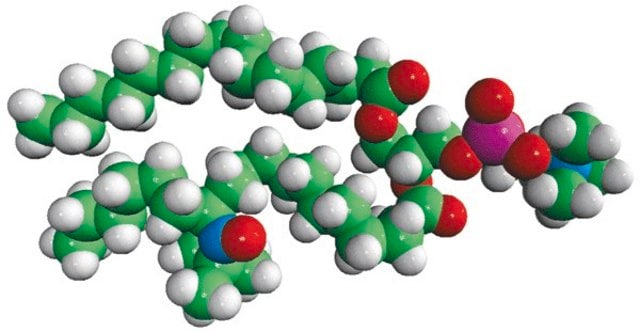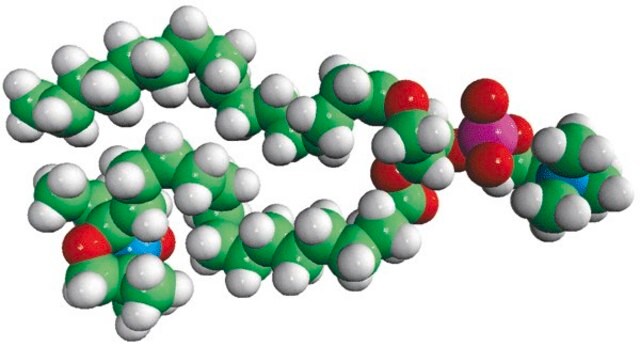810601C
Avanti
16:0-5 Doxyl PC
Avanti Research™ - A Croda Brand 810601C
Sinônimo(s):
1-palmitoyl-2-stearoyl-(5-doxyl)-sn-glycero-3-phosphocholine
About This Item
Produtos recomendados
Ensaio
>99% (TLC)
Formulário
liquid
embalagem
pkg of 1 × 1 mL (810601C-1mg)
fabricante/nome comercial
Avanti Research™ - A Croda Brand 810601C
concentração
1 mg/mL (810601C-1mg)
tipo de lipídio
ESR probes
phospholipids
Condições de expedição
dry ice
temperatura de armazenamento
−20°C
Descrição geral
Aplicação
- as a component in virus-like large unilamellar vesicles (VL LUVs) to quench 4-chloro-7-nitrobenz-2-oxa-1,3-diazole (NBD) fluorescence emission[7]
- in the preparation of multi-lamellar vesicles (MLVs) as a site-specific quencher to perform fluorescence quenching studies[8]
- in the preparation of spin-labelled multi-lamellar vesicles (MLVs)[9]
Ações bioquímicas/fisiológicas
Embalagem
Nota de preparo
Informações legais
Palavra indicadora
Danger
Frases de perigo
Declarações de precaução
Classificações de perigo
Acute Tox. 3 Inhalation - Acute Tox. 4 Oral - Aquatic Chronic 3 - Carc. 2 - Eye Irrit. 2 - Repr. 2 - Skin Irrit. 2 - STOT RE 1 - STOT SE 3
Órgãos-alvo
Central nervous system, Liver,Kidney
Classe de risco de água (WGK)
WGK 3
Escolha uma das versões mais recentes:
Certificados de análise (COA)
It looks like we've run into a problem, but you can still download Certificates of Analysis from our Documentos section.
Se precisar de ajuda, entre em contato Atendimento ao cliente
Já possui este produto?
Encontre a documentação dos produtos que você adquiriu recentemente na biblioteca de documentos.
Nossa equipe de cientistas tem experiência em todas as áreas de pesquisa, incluindo Life Sciences, ciência de materiais, síntese química, cromatografia, química analítica e muitas outras.
Entre em contato com a assistência técnica










